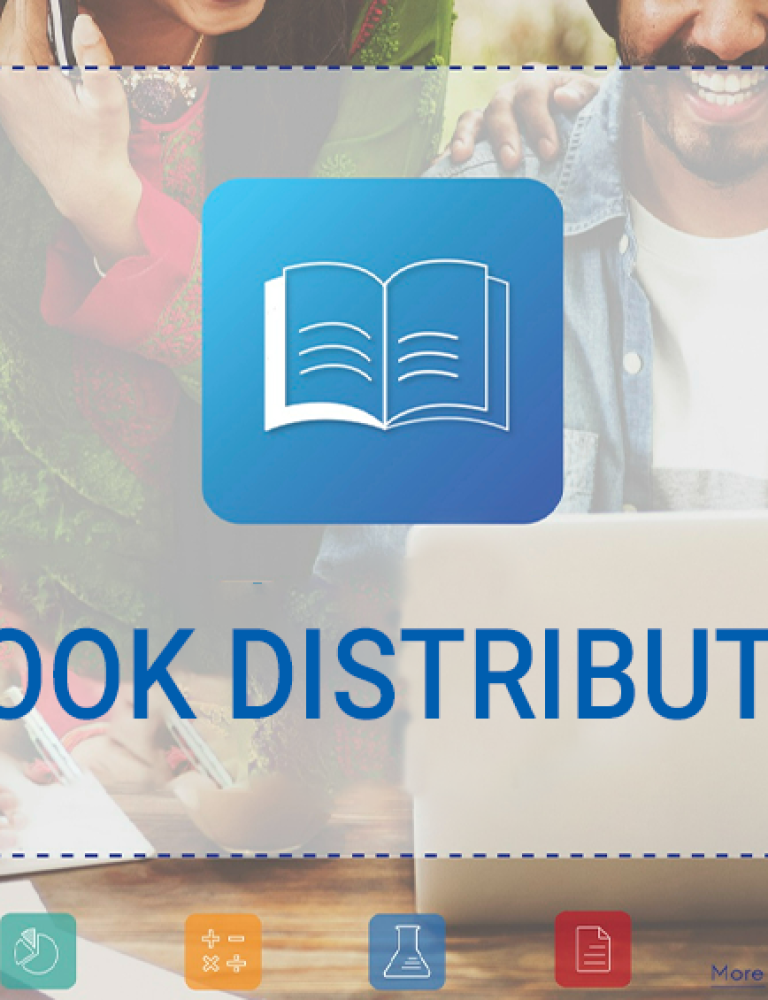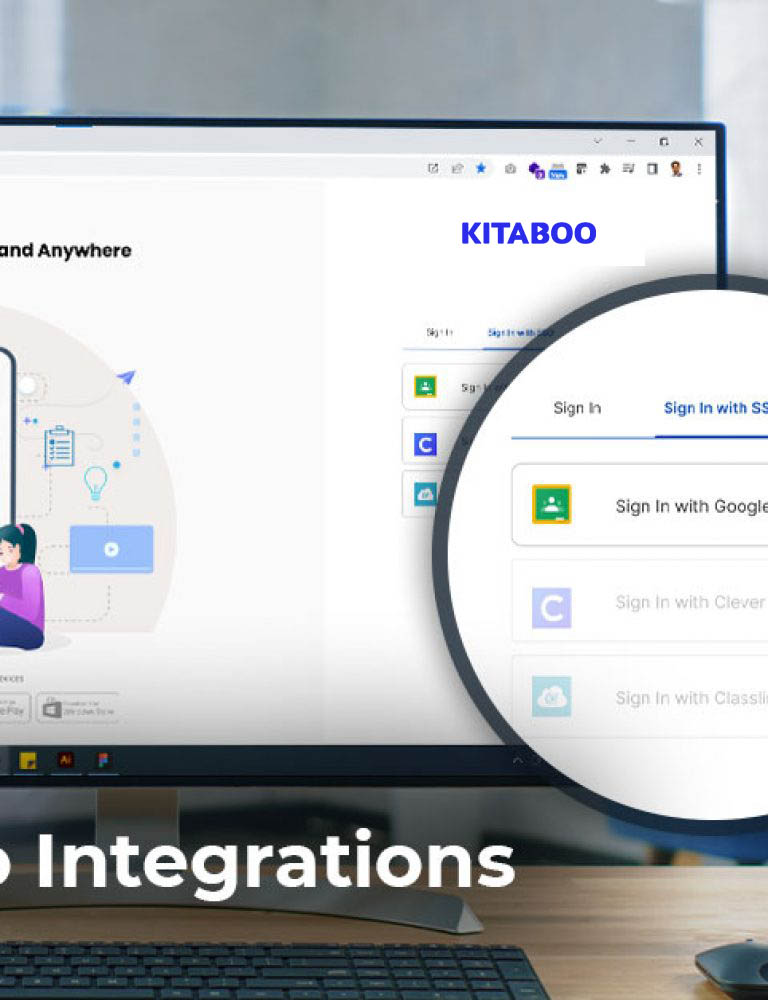In the dynamic realm of literature and information dissemination, traditional publishing strategies find themselves at a turning point, which necessitates a transformative embrace of evolving trends.
As the global publishing industry surges forward, now valued at $91.39 billion and projected to grow by 7.06% to $97.84 billion by 2027, publishers must grapple with the impact of self-publishing and adapt to new distribution models. This necessitates not only an understanding of the challenges posed by digital innovation and shifting consumer preferences but also a proactive stance in forging strategic partnerships.
In this regard, partnering with digital textbook platforms like KITABOO can be beneficial due to the platform’s capabilities in simplifying the adaptation to changing publishing landscapes.
This way, publishers can efficiently navigate the evolving terrain of the publishing industry.
Table of Contents:
I. 3 Key Challenges Faced by Publishing Houses in 2024
- Keeping Up with the Technological Advancements
- Keeping Up with the Consumer Preferences
- Keeping Up with the Market Trends in Publishing
II. 6 Trends and Strategies to Check Out in 2024
- Digital Transformation
- Innovative Content Formats
- Adopting Agile Methodologies
- Exploring International Markets
- Sustainability Initiatives
- Collaboration and Partnerships
III. Conclusion
3 Key Challenges Faced by Publishing Houses in 2024
Here are some key challenges that publishing companies face in the current world:
1. Keeping Up with the Technological Advancements
Leaders of the publishing houses are finding it difficult to cope with the digitalization pressure. Most of the leaders face threats from digital piracy, that eventually impacts the revenue and intellectual property rights of the publishing sector.
Another concern is to keep pace with rapid technological advancements, such as emerging self-publishing technologies and distribution platforms.
In this context, note that digital textbook platforms like KITABOO are becoming increasingly popular due to their ability to simplify content management and provide innovative solutions for publishers. It helps publishing houses stay on top of technological changes and protect their content from piracy.
2. Keeping Up with the Consumer Preferences
Many publishers find it difficult to adapt to shifts in how readers consume content, including preferences for digital formats and interactive experiences.
The need of the hour is to strike the right balance between traditional publishing models and adapting to the ongoing consumer demand in the industry.
Considering consumer choices and personalization, it is also getting difficult to discover viable content amid the vast array of available options, simultaneously ensuring that it meets the required quality.
3. Keeping Up with the Market Trends in Publishing
Navigating the saturated markets poses a significant challenge for leaders in the publishing industry. Moreover, the market is deeply impacted by economic uncertainties and fluctuations that may affect consumer spending on books and entertainment.
Publishing houses also need to address the growing concerns about environmental impact, pushing for more sustainable publishing practices. This challenge extends beyond market saturation, as leaders in the publishing industry must contend with the unpredictable shifts in consumer spending influenced by economic uncertainties.
6 Trends and Strategies to Check Out in 2024
Successful leaders of publishing companies can navigate many obstacles by embracing the following trends in publishing to succeed in the industry in 2024:
1. Digital Transformation
One of the most significant ways to lead the publishing market is by prioritizing digital platforms, e-books, and multimedia content. Further, it is equally important to align this content with changing reader preferences and consumption habits.
While digitally transforming their services and functions, leaders of publishing houses must:
- Evaluate the need for improvement and digitization and investing in technology.
- Convert print content into digital formats and explore multimedia options.
- Cater to diverse audience preferences using eBooks, audiobooks, and online publications.
- Indulge in Data-Driven Decision-Making by using data analytics to gain insights into reader behavior, market trends in publishing, and content performance, enabling informed decision-making.
- Implement AI for personalized content recommendations and understanding of audience preferences.
- Actively engage in digital marketing, social media, and online communities.
- Build online communities to create a sense of belonging among readers and encourage ongoing engagement.
Even when it comes to the K12 sector, digital transformation is essential for educational publishing. Embracing technology, such as interactive learning platforms and digital textbooks, enhances the learning experience for students and educators alike.
In this regard, with digital platforms like KITABOO, publishers can achieve business goals by creating, managing, distributing, and optimizing content for all devices and platforms including web, mobile browsers, iOS, and Android apps.
2. Innovative Content Formats
Experimenting with immersive experiences, such as experimenting with multimedia, and augmented reality (AR) and virtual reality (VR), to engage audiences in new ways. Here is what publishers can do:
- Identify user preferences and offer personalized content based on needs.
- Develop cross-media content based on creativity and innovation.
- Publishers must focus on the provision of interactive eBooks, podcasts, live streaming webinars, short-form videos, infographics, interactive maps and timelines using 3D graphics, and other kinds of user-generated content.
- Implement unique engagement techniques, embrace emerging technologies, and utilize social media platforms to promote and distribute content.
Especially when it comes to the K12 sector, publishers need to embrace innovative content formats to enhance the learning experience for students. Interactive eBooks, educational podcasts, and virtual classrooms are effective tools for capturing the attention and interest of young learners. By incorporating these innovative content formats, publishers in the K12 sector can create dynamic and engaging educational materials.
3. Adopting Agile Methodologies
Publishing houses must incorporate agile techniques to respond to market changes quickly, test new ideas, and optimize publishing strategies for maximum impact.
On this note, publishers must:
- Use trending agile methodologies and form cross-functional teams.
- Use visual tools to track and manage work.
- Break down complex projects into smaller manageable pieces to provide tangible value.
- User involvement is important while adapting to change
4. Exploring International Markets
It is important for publishing houses to develop strategic global partnerships to expand their diverse audiences. Building strong global communities can introduce a sense of connection among readers and authors, enhancing brand loyalty.
Here’s how publishers can explore foreign markets:
- Conducting thorough research and understanding global market trends in publishing.
- Implementing multilingual marketing, including diverse experiences within the content.
- Getting into digital marketing and leveraging online platforms to reach international audiences.
5. Sustainability Initiatives
Incorporating sustainable practices in publishing can help publishing companies succeed in a competitive environment.
In this regard, publishers must:
- Adopt eco-friendly printing and publishing strategies with the intent to minimize the environmental impact.
- Consider alternatives like recycled paper and the use of digital resources and online platforms that contribute to paper conservation and lowering of carbon footprints.
- Raise awareness of environmental issues among students.
- Follow the principles of corporate social responsibility (CSR), educational objectives, and societal expectations.
6. Collaboration and Partnerships
It is important for leaders of publishing houses to enter into strategic partnerships with other industries and organizations. This will help them with important insights into consumer behaviors, critical information, needs and preferences of the audiences, gaps that exist in the industry, and production and distribution of content.
In this context, publishers must:
- Explore new revenue models, such as subscription-based services or bundled offerings.
- You can enter into negotiated agreements and offer affordable, customized, and creative resources to organizations
- Contribute towards cross-cultural information sharing and open new avenues for global collaborations.?
- Partner with key educational, distribution, and technological organizations to promote research and innovation and stay updated on emerging trends in publishing, practices, and technologies
- Share responsibilities and mutually enter into agreements that mitigate risk for both parties
Conclusion
In today’s world, the leaders of publishing houses need to be adaptable, tech-savvy, and customer-focused to thrive in a competitive and dynamic industry.
In this fiercely competitive realm, the publishing sectors need to embrace change, introduce innovation, switch from conventional to contemporary, understand readership trends, and deliver valuable content will be crucial for long-term success.
Digital publishing platforms like KITABOO can help the managing heads of publishing houses with end-to-end digital publishing, eBook creation, and content delivery.
Write to us at KITABOO@hurix.com to know more!
Discover How An Ebook Conversion, Publishing & Distribution Platform Can Help You
Kitaboo is a cloud-based content platform to create-publish & securely distribute interactive mobile-ready ebooks.
You May Also Like








